In the third from our series of articles looking at the key speakers at this year's Aftermarket business conference, Copperberg's Mark McCord reflects on an exciting presentation given by Mika Karaila, Valmet on the potential of Augmented Reality in...
ARCHIVE FOR THE ‘ar’ CATEGORY
Dec 19, 2018 • Features • Aftermarket • AR • Augmented Reality • Future of FIeld Service • field service • field service software • field service technology • Mika Karaila • Service Mangement • Valmet
In the third from our series of articles looking at the key speakers at this year's Aftermarket business conference, Copperberg's Mark McCord reflects on an exciting presentation given by Mika Karaila, Valmet on the potential of Augmented Reality in field service delivery...
The schedule for Aftermarket 2019 is already being put together and it promises to be a key date in the calendar once again. This is an event that almost always sells out so head over to aftermarketeurope.com now and secure your place at this important industry event...
Maintenance technicians are busy feeling their way around a new power station in northern Finland – even though the plant hasn’t been built yet.
They’re part of a team that’s breaking new ground with augmented reality (AR) technology, working within a virtual model of the facility, even “walking” its rooms and machinery two years before it’s completed.
In this digital environment the technicians are familiarising themselves with the Oulu Energy Co power station’s layout and using the platform to make alterations to its design before construction begins next year.
"It means there are no delays and there is no downtime when the plant eventually opens, the engineers will know every centimetre of it when it’s open..."
“It means there are no delays and there is no downtime when the plant eventually opens, the engineers will know every centimetre of it when it’s open,” explained Mika Karaila, research director at Valmet, the Finnish services and automation firm that’s developing the power station and which created the software for them. “They are designing everything there.”
Karaila is a leading expert in the application of AR, and its cousins virtual reality (VR) and mixed reality (MR) to maintenance and support services, a subject he elaborated on in detail at Aftermarket 2018. He foresees a future in which crucial training and maintenance will be carried out remotely and virtually.
“The technology is there already and we are using it,” he said.
For more than 30 years, Karaila has been developing and putting into operation distributed control systems and integrated controls systems, and has more recently turned to artificial intelligence and visual technologies.
In his presentation, Karaila donned a pair of high-tech digital glasses and headset to demonstrate how the Valmet software can add virtual elements to a real-life environment. Via a giant video screen linked to Karaila’s headset, assembled delegates watched a huge paper processing machine materialise in the room. As Karaila walked around, his view of the digitally visualised machine adjusted accordingly.
Still, in its infancy, the technology is being driven mostly by the gaming industry, where players demand increasingly immersive and life-like experiences. But Karaila says AR, MR and VR’s application in industry will grow in sophistication as it becomes more widely adopted.
Its potential for field services and aftermarket services are enormous, he said.
“Facilities that are located many miles away can be monitored remotely,” he explained. “That, we can do now, but in the not too distant future it could be used so that an engineer can be at a facility as a telepresence, guiding the actions of a technician at the facility in repairs and maintenance.”
"Eventually, of course, we will be able to use this software in conjunction with robots to perform repair and maintenance tasks remotely..."
Lasse Laanikari, head of area customer service management at Liebherr, said the technology would be suitable for his company.
“I see training benefits in this,” Laanikari said. “We have earth movers 3,000 kilometres from our base, which we may see once a year and when we send a technician they may never have seen it before. They may travel there and realise they do not have what they need for the job. So you stay there, wait for someone to ship it over and start again. This could offer expert help in the field when they operators don’t know what to do.”
The Valmet technology enables collaboration between multiple engineers in the same virtual space. In a demonstration, Karaila showed how other team members are represented as simple plain head-and-shoulders avatars. But he said soon the software will be able to project images of those individuals’ faces onto their digital forms.
“Eventually, of course, we will be able to use this software in conjunction with robots to perform repair and maintenance tasks remotely,” Karaila said. “The possibilities are endless.”
Interview Conducted by Mark McCord at Aftermarket Business Platform 2018
Be social and share...
Aug 20, 2018 • Features • Management • AR • Augmented Reality • Connected products • Predictive maintenance • Digital Twins • field service • field service management • Service Delivery • Service Management • Si2 partners • Titos Anastassacos • Managing the Mobile Workforce
Titos Anastassacos from Si2Partners shares with us some interesting insight on Augmented Reality from their recent research-based reports...
Titos Anastassacos from Si2Partners shares with us some interesting insight on Augmented Reality from their recent research-based reports...
Technology is changing field service rapidly.
In the not too distant future Smart Connected Products will be self-diagnosing; Maintenance will become, almost exclusively, predictive; Spare parts will be 3D printed; And humans will interact at a deeper level with machines through Augmented Reality and Digital Twins, whether the machine is in the same room or on the other side of the planet.
The nature of the service business will shift from technical labour and logistics to knowledge management and exchange. Service delivery will change drastically as will the nature of competition and business models.
"The nature of the service business will shift from technical labour and logistics to knowledge management and exchange. Service delivery will change drastically as will the nature of competition and business models..."
But if the “end-state” medium term can be discerned quite clearly, getting there poses significant challenges.
So, at a Si2 Partners, we developed a series of survey-based management reports, to shine a spotlight into service businesses’ efforts to grasp the opportunities of digitization while dealing with the challenges. We then draw conclusions and recommend the best ways forward. The first report on Augmented Reality is available now, the next report on Predictive Maintenance is due by the end of the year.
The first public demonstration of AR was in 1998 during ESPN’s coverage of a football game: Generation and display of the yellow first down line. The line stayed fixed within the coordinates of the playing field. It was not physically present on the field and was visible only to the television audience.
But from that simple application, only 15 years later, Gartner was predicting that companies would be increasing their profits by over $1 billion annually -by 2017- through the application of AR in their field service business.
Things, of course, are not so simple. Reducing costs does not directly translate into increased profits.
That depends on prices and we know that digitization tends to make them drop, sometimes to zero -think of what happened to chemical photography. But even if we only consider costs, AR is clearly important, in many ways transformational, technology with a potentially very powerful impact.
So, are companies adopting AR for field service? Our survey showed that they are.
Most expect significant cost savings and productivity improvements through AR, mainly in engineering time and travel cost -and, interestingly, smaller companies are at least as much engaged with the technology as larger ones: Upfront investment can be low, and it can be implemented quickly and stand-alone (at least initially).
Importantly, it may help reduce pressure on scarce, highly qualified, and expensive engineering resources, while simultaneously improving the cost-effective support of remote customers (smaller companies are less likely to have extensive service networks).
Overall, we found that while less than 1/3 of respondents already used AR, and, of those, the majority had introduced it over the past 12 months, another third planned to introduce it over the coming 12 months. This indicates an accelerating trend.
Of course, for users, it has not been all smooth sailing. Challenges are numerous: For example, it turns out that connectivity at customer sites is a significant issue, which hampers the use of the technology. But technical problems are normal at this stage of introduction.
Far more important are managerial challenges.
For example, as always, one size does not fit all: The most commonly reported use case is field technicians receiving AR-based support by experienced engineers from a remote central hub.
"Better applications for such cases may be pooling AR-based support, providing technical information through “knowledge-libraries”..."
This may help companies with large field service workforces (possibly with high turn-over rates or fewer qualifications) supporting standardized equipment. It is not much help to vendors of highly complex equipment whose field engineers are already highly experienced and qualified themselves.
In fact, it may be even counter-productive, slowing things down or reducing acceptance.
Better applications for such cases may be pooling AR-based support, providing technical information through “knowledge-libraries”, particularly on rarely encountered problems or legacy equipment, or integrating AR with the IoT, so that operational data can provide real-time context to engineers and support for diagnostics.
However, such applications require investment in digital content, something that many AR users have often not considered, as well as a process of experimentation and development.
Another finding is that following implementation of AR, many managements don’t take the necessary action to lock-in the AR benefits by pushing through change in the support and field service processes. For example, few companies eliminate technical manuals and drawings from a field engineer’s toolbox, delaying the necessary adjustments.
And, while many companies market their AR capability to customers, few have developed AR-based offerings. Yet our survey shows that customers would welcome AR-based support if it would help to reduce costs and improve performance, notwithstanding issues of confidentiality or privacy.
The process to integrate AR into a company’s mode of operations and to maximize its benefits will, as for any new technology, be arduous and bumpy. But the impact on costs and productivity is becoming clear. Though most don’t yet formally track it, 72% of our respondents said that AR is on par with or has exceeded expectations.
Augmented Reality in Service: Ready for Prime Time? Visit the Service in Industry Hub Shop to download the flyer or purchase the report. For more information contact titos.anastassacos@si2partners.com or visit Si2Partners
Be social and share
Jul 31, 2018 • News • AR • Augmented Reality • Future of FIeld Service • Michael Leyva • Moverio • Brian Ballard • Epson • field service • Smart Glasses • Upskill
Epson, providers of the Moverio® augmented reality (AR) smart glasses platform, today announced both the availability of the new Moverio BT-350 ANSI Edition smart glasses and the release of the Upskill® Skylight® AR platform on Moverio...
Epson, providers of the Moverio® augmented reality (AR) smart glasses platform, today announced both the availability of the new Moverio BT-350 ANSI Edition smart glasses and the release of the Upskill® Skylight® AR platform on Moverio...
The availability of Upskill’s award-winning software with the new BT-350 ANSI Edition allows the Moverio platform to be used in a variety of commercial environments, with the goal of driving greater worldwide adoption of the technology.
Skylight, Upskill’s AR software platform interface allows hands-on workers to get the job done faster and more accurately by connecting them to the people, information and equipment they need while remaining hands-free to focus on their tasks and their tools.
“Epson was one of the first companies to see the value of smart glasses in the enterprise and their Moverio hardware is an established, trusted name in the market,” said Brian Ballard, CEO and co-founder, Upskill. “By offering the Skylight platform on the Moverio BT-350 ANSI Edition smart glasses, we add increased choice for our customers looking to adopt high quality, industrial-grade AR devices to their operations to drive significant performance improvements across their workforce.”
We’re confident that addressing this workplace safety requirement and collaborating with Upskill, will enable enterprises to accelerate smart glasses adoption across the workforceDesigned to be worn in environments that require safety glasses, the new Moverio BT-350 ANSI model includes indoor and outdoor safety shields that meet ANSI Z87.1 safety certification requirements. Featuring a flexible and durable hinge-based headset, the Moverio BT-350 ANSI smart glasses can be worn comfortably on a wide range of head sizes.
Upskill has received numerous awards for Skylight, including recognition as a World Economic Forum Technology Pioneer, Gartner Cool Vendor, Hannover Messe Hermes Award Finalist, and most recently, Augmented World Expo’s “AR Best in Show,” to name a few. On average, customers using Skylight on smart glasses see a 32 per cent performance improvement in use cases that span manufacturing, logistics and field services. Skylight on the Moverio BT350 ANSI Edition creates a smart-safety glass solution for use anywhere eye protection is required for a safe working environment.
“Since Epson launched its first iteration of the Moverio smart glasses seven years ago, we have been diligently working to enhance the technology to meet the demands of end-users, including the need for an ANSI edition of the Moverio glasses,” said Michael Leyva, product manager, augmented reality solutions, Epson. “We’re confident that addressing this workplace safety requirement and collaborating with Upskill, will enable enterprises to accelerate smart glasses adoption across the workforce.”
Support and Availability The new Moverio BT-350 ANSI smart glasses will be available in July 2018 for $1,199 (USD) through authorized Epson resellers and Epson.com. For additional information on the Moverio BT-350 ANSI Glasses please visit fs-ne.ws/GNQh30l7Eh1
Be social and share
Apr 19, 2018 • Features • AR • Augmented Reality • Future of FIeld Service • Remote Assistance • Evans Manolis • Help Lightning • Hololens • Scope AR • Scott Montgomerie
Augmented Reality ticks all the boxes of a technology that could have a truly transformational impact on field service delivery and offers a viable solution to many of the challenges of an ageing workforce. However, 2017 research by Field Service...
Augmented Reality ticks all the boxes of a technology that could have a truly transformational impact on field service delivery and offers a viable solution to many of the challenges of an ageing workforce. However, 2017 research by Field Service News revealed that adoption of AR is still lower than expected - so just what is holding everybody back?
It is long been a widely held belief here at Field Service News that Augmented Reality (AR) will one day play a hugely important role in field service delivery.
But how will that belief begin to materialize and perhaps, more importantly, why has it failed to do so in a significant manner as yet? Yes, there are a growing number of case studies of organizations who have implemented an AR solution but they still seem to be the exception rather than the rule and mass adoption of AR still seems a long way off - but why?
Is it a case that we are pushing at an open door and as we saw with Cloud adoption? Is it just a case of waiting for the rest of the sector to catch up?
Scott Montgomerie, CEO, Scope AR certainly seems to think so.
The potential for AR in field service is tremendous and as the technology continues to prove its worth within organisations who were early to adopt it, AR will only become more pervasive“The potential for AR in field service is tremendous and as the technology continues to prove its worth within organizations who were early to adopt it, AR will only become more pervasive,” he asserts.
“The technology is uniquely positioned to close the growing skills gap in the field service industry by delivering on-demand knowledge transfer and empowering workers to become experts at any given task with little to no training.”
“The efficiencies this creates in terms of a) ensuring a procedure is completed accurately every time by delivering best practices and verifying completed work, b) time savings gained with regard to reduced mean time to resolution and equipment downtime and, c) improved customer satisfaction, will soon propel AR into becoming a table-stakes technology that field service companies can’t afford to go without if they want to remain competitive.”
Evans Manolis, Senior Consultant at another of the pioneers of AR in Field Service, Help Lightning, also thinks that AR has huge potential in our sector.
“The potential is unlimited,” he asserts. “We are only now beginning to scratch the surface of the positive impact that Augmented Reality will have on the field service marketplace and the future of service delivery.”
When used correctly, AR can positively impact several Key Performance Indicators that most field service organizations measure.“When used correctly, AR can positively impact several Key Performance Indicators that most field service organizations measure. From significant reductions in truck rolls, to increased first-time fix rates, to improved time to resolution, to maximized product uptime and better overall customer experiences, AR’s potential is easy to envision. AR is the future of service delivery.”
So given this potential, just what is holding companies back from getting on-board the AR train? What exactly are the objections and hurdles (perceived or real) which are holding field service companies back from adopting AR?
“The biggest objection to AR adoption is actually a misconception,” comments Montgomerie.
“Fancy videos and energetic Innovation Teams want to show the future of AR in industry, which often jumps past the practical applications that can scale saving time and money today.”
“The future of AR will include everyone having AR wearables, which are still limited in availability and costly today. While practical applications of AR can be deployed in scale to support field teams on wearables where available, AR solutions can also support handhelds like smartphones and tablets for everyone else. Combine this with the fact that wearables will become readily available and increasingly affordable in the coming months, and AR is something for now, not just in the future.”
However, cost is also a consideration that is holding some companies back as Montgomorie explains.
The cost of hardware remains a barrier to entry for many organizations. Equipping an entire remote workforce or team of field service technicians with a wearable device requires a sizable capital expenditure, one that most enterprise companies don’t have.“The cost of hardware remains a barrier to entry for many organizations. Equipping an entire remote workforce or team of field service technicians with a wearable device requires a sizable capital expenditure, one that most enterprise companies don’t have.”
This is set to change rapidly though as an increase in demand drives competition up and costs down.
“The cost of even the most sophisticated AR devices on the market, such as the HoloLens, are becoming more affordable,” adds Montgomorie.
“That, coupled with big investments from the likes of Apple and Google to deliver platforms enabling AR to be accessed on nearly any smart device, are quickly reducing the hardware-related hurdles holding many companies back.”
For Manolis the question is more about a reluctance to adapt radically new service strategies more than the additional costs.
“A few years ago, the major objections centered on the technology. AR looked really cool and was cutting edge, but did it work?” He asks.
“Fast forward a few years and now few question whether AR works from a product standpoint. But the reality is that the use of AR is not a technology play.”
“The technology works. The successful deployment of a service strategy rooted in AR is really about service transformation, not technology.”
“It’s about effectively changing the way organizations deliver service. It is about breaking down walls of resistance within service teams and about driving successful buy-in from the service teams tasked with using the technology. It’s about the entire company and not just the service department. It’s about effectively communicating early successes and focusing on what is in it for the service team. Most service leaders we speak with see this (change management) as a hurdle,” he continues.
“At Help Lightning we realized these challenges and have started a Coaching and Consulting Practice, to help our customers successfully use AR to transform their service organization and that has been the game changer for our customers.”
Manolis’ point about the importance of understanding the sheer magnitude of impact AR will have on how an organization approaches service delivery is a hugely salient one and it leads us to consider how AR will fit into the ecosystem of technologies that field service organizations include within their workflows.
Could it be that ultimately AR will become an integrated element of the Field Service Management solution as mobile did previously?Could it be that ultimately AR will become an integrated element of the Field Service Management solution as mobile did previously?
Montgomerie certainly believes so.
“AR will inevitably become part of the tools that field technicians and remote workers use daily in order to do their job. AR is the next evolution in user interfaces and is revolutionizing the way we see and interact with data and information.”
“By allowing users to intuitively follow instructions or easily act upon insights by putting content when and where the worker needs it most - directly overlaid onto the real world - AR is delivering the on-demand knowledge transfer employees need to conduct complex tasks.”
“As the market matures, we expect to see fewer evaluations of how AR alone can drive value, but instead, the mindset will shift toward how it, integrated with other support tools, can impact a company’s bottom line collectively.”
Manolis also thinks that this will, without question be the case.
“Service delivery is changing rapidly. If you are delivering service today the same way you were 5 years ago, you are in trouble. And if you continue to deliver service that very same way, you will be extinct in another 5 years. Integration is a key element in the successful deployment of AR,” he states.
“Integrating AR technologies into service management software solutions like ServiceMax and SalesForce, is critically important,” he adds.
Of course, one additional theory as to why AR hasn’t yet set the world on fire is that in the minds of many field service executives it is intrinsically linked with the development of smartglasses - which themselves are struggling to overcome the stigma left by the widespread disappointment of Google Glass.
Is the widespread adoption of AR essentially actually tied to the adoption of smart glasses in reality?But is the widespread adoption of AR essentially actually tied to the adoption of smart glasses in reality?
Montgomorie doesn’t think this is necessarily the case.
“While smart glasses deliver the ideal hands-free experience to allow remote workers to more easily and efficiently repair or assemble a piece equipment, AR is successfully being deployed (and showing ROI) through the use of smartphones and tablets today. Considering that AR glasses are very limited in availability at this point, it is critical that adoption also includes handhelds so that an organization can support all employees today until glasses become more common,” he explains.
“With advances in hardware, we are expecting several new smart glasses to come to market in the next year or two, bringing down the price and solving many of the issues with the current crop of smart glasses, including field of view, battery life, durability and user experience.”
“It may be a few years after that, but within 3-5 years we expect many field service technicians to be equipped with smart glasses.”
Manolis also sees the future of AR not being dependent on smartglasses in the short term although he does see that changing in the future.
“The important word in the question is “essentially” and my answer to that is no,” he comments.
“We have many customers who have adopted and deployed our solution to their service organizations on a global basis and they’re not using Smart glass technology.”
“That being said, smart glasses will be the next wave of AR technology that we will see, but in my opinion, we are still 18-24 months away from that point. Today there are too many challenges to deploying smart glasses across large service organizations. They tend to overheat, battery life is short, field service techs tend to treat them roughly and they are prone to break, they are still expensive, and many service techs say they are hard to use. All of this will change as the technology improves over the next few years.”
With AR being such a quickly evolving market, FSOs should look for a technology solution that can be implemented today, but that is scalable enough to support devices or hardware platforms of the future,But what about those companies that want to move forward with AR in the here and now? Whilst it is still a sector in its infancy, there are an increasing number of companies offering AR solutions dedicated to the field service sector. So what should we be looking for in an AR provider?
“With AR being such a quickly evolving market, FSOs should look for a technology solution that can be implemented today, but that is scalable enough to support devices or hardware platforms of the future,” urges Montgomorie.
“In addition, it is important for FSO’s to identify a specific challenge with the vendor and ensure that this challenge can be solved. Just as important, FSOs need to remember that it does not need to be every challenge,” he adds.
“The first question a field service company should ask themselves is what is driving their interest in AR and what do they hope to accomplish through the use of AR? Once those answers have been given they should look for a company that fits their goals and objectives,” Manolis asserts.
“Then they should look at the product roadmap the company has laid out. They should be sure that the AR vendor they choose has a product that is easy to use. Frictionless and effortless for both internal and external customers. Finally, they should ask about what the AR provider can offer to help them through the process of service transformation and adaption of the AR solution.”
Be social and share
Mar 06, 2018 • video • Features • AGeing Workforce • AR • Artificial intelligence • Future of FIeld Service • Kieran Notter • research • Research • drones • IoT • servicemax
Kris Oldland, Editor-in-Chief, Field Service News and Kieran Notter, Director, Global Customer Transformation, ServiceMax from GE Digital explore the findings of an exclusive independent research conducted by Field Service News and sponsored by...
Kris Oldland, Editor-in-Chief, Field Service News and Kieran Notter, Director, Global Customer Transformation, ServiceMax from GE Digital explore the findings of an exclusive independent research conducted by Field Service News and sponsored by ServiceMax from GE Digital.
In this excerpt from the full one-hour long webcast, Oldland and Notter discuss both the challenges and opportunities of an ageing workforce within the field service sector and assess whether there is any substance to fears that we are facing an ageing workforce crisis.
Want to know more? The full webcast PLUS an exclusive report based on the findings of this research is available for Field Service News subscribers.
If you are a field service practitioner you may qualify for a complimentary 'industry practitioner' subscription. Click here to apply now!
Be social and share
Mar 02, 2018 • Features • AI • AR • Artificial intelligence • Augmented Reality • Coresystems • Future of FIeld Service • manuel grenacher • Internet of Things • IoT
Manuel Grenacher, CEO Coresystems, explores the major trends that he expects to impact field service companies across 2018...
Manuel Grenacher, CEO Coresystems, explores the major trends that he expects to impact field service companies across 2018...
While 2017 introduced innovative new technology-based trends with the likes of artificial intelligence (AI) and augmented reality (AR), 2018 will bring real-world applications that put those buzzwords into practice. Here are the top trends we see this coming year.
The IoT will drive more proactive device maintenance, service and repair
In 2016, Gartner, Inc. forecasted that 8.4 billion connected things will be in use worldwide in 2017, with 5.5 million new devices being connected every day. The vast majority of today’s devices and machines come equipped with sensors, which transmit signals, status updates and warnings.
Field service innovators are finding ways to use the IoT and increased connectivity to their advantageThese alerts not only allow people to address problems proactively but also accelerate expectations around service time. The alerts notify users the moment their device needs maintenance or repair, which immediately puts the technician on the clock to resolve the issue. Challenges such as long response wait time and excessive appointment windows already plague the field service industry, so the IoT threatens to exacerbate these existing issues.
However, field service innovators are finding ways to use the IoT and increased connectivity to their advantage. In 2018, further innovation in the field technology space will enable technicians to take advantage of the IoT’s increased connectivity and automation in today’s devices, enabling them to provide service in real time to meet and exceed customer expectations.
Artificial intelligence will simplify and automate service appointments
2018 will focus on not the adoption of AI, but the implementation of it in real use cases. One industry that stands to greatly benefit from AI is customer service, particularly field service. Gartner forecasts that 85 percent of customer relationships will be through AI-powered services by the year 2020.
AI technology will make strides in streamlining the customer experienceIn 2018, AI technology will make strides in streamlining the customer experience. Chatbots will troubleshoot issues with customers, determining all necessary information before dispatching a technician. Powered by machine learning, chatbots will understand if a customer needs assistance in resolving an issue or wants more information about a certain piece of equipment. Logistic regression capabilities will enable chatbots to walk customers through equipment problems step by step.
AI will also automate the technician’s workflow. One of the biggest pain points in customer service – particularly field service – is dispatch time. To combat this, heuristic search functions in AI technology will determine which technicians are not only available but also knowledgeable enough to properly service the request. AI will also consolidate relevant customer details – from device history and prior appointments to technicians who are qualified and available to resolve an issue – to ensure customers receive the most efficient and painless experience possible.
Augmented reality will provide unprecedented visibility into worksites
Augmented reality enhances the way we see, hear and feel by bringing elements of the virtual world into the real world. Many people associate augmented and virtual reality with the gaming industry, but the technology offers far more than entertainment for a niche group. Industry forecasters predict that by 2020 the market for AR will reach $100 billion in value.
The increased connectivity that the IoT brings will continue to propel the application of AR in the field service sector. The increased connectivity that the IoT brings will continue to propel the application of AR in the field service sector. Using standard mobile devices and AR glasses, service technicians are finding unique ways to approach service. AR applications that allow technicians to look into machines without disassembling them have proven enormously helpful for pinpointing malfunctioning parts. Also, the ability to share data from onsite with offsite experts allows for a more collaborative approach to finding solutions. And this capacity to share knowledge and access an endless stream of information is increasing the first-time-fix rate and thereby improving the customer experience.
Be social and share
Nov 28, 2016 • Features • AR • Future of FIeld Service • IFS • IoT • scheduling
Tom DeVroy, senior product evangelist, Enterprise Service Management at IFS outlines three technology driven developments poised to disrupt field service...
Tom DeVroy, senior product evangelist, Enterprise Service Management at IFS outlines three technology driven developments poised to disrupt field service...
Effective field service is about proactively managing your workforce and inventory in order to meet the constantly sliding scale of customer expectations. As a result, field service organisations are constantly looking to improve on the key metrics to better serve customers: first-time fix rate (FTF), mean time to service (MTTS) and mean time to repair (MTTR).
Three new technology driven developments are establishing themselves in the market, with the potential to dramatically impact these field service metrics to benefit both the customer and service provider:
- Advanced mobility: augmented reality, instant messaging platforms and native apps
- Predictive analytics enabling prescriptive maintenance
- Optimised scheduling and demand forecasting in an IoT world
First: Beyond mobility: augmented reality, instant messaging and native apps
A mobile workforce needs a mobile-driven field service strategy. In a recent study on mobility, performance and engagement, 60% of employees said mobile technology makes them more productive in the workplace. But field service organisations are now moving beyond simple mobility, looking for more intelligence and flexibility from their mobile computing platform in order to take full advantage of next generation devices.
Native apps are a key part of this - allowing engineers to receive instant updates, access repair information or collaborate with product experts without leaving the job site. Instant messaging platforms such as Slack and WeChat are also allowing field service engineers to keep connected, with more information and collaboration supported on their mobile device. Engineers are able to contact other colleagues for assistance in real-time – reducing the need to return to base for assistance.
Seeing is believing
Skills can be leveraged anywhere, any time with the capability of modern mobile technology – drastically improving FTF.
ABI Research shows augmented reality is on the rise, and Gartner predicts businesses will purchase 53 million tablets by 2016. There are instant benefits for field service engineers. Mobile solutions now allow engineers to receive real-time feedback and expertise while on the job, enabling repairs to be completed more quickly and efficiently. An IFS partner, XMReality, is already working on pioneering augmented reality projects like this.
With this remote guidance, a support technician is able to watch and guide the engineer through every step of the repair without having to leave base. Using smartglasses, engineers are able to see a real-time and interactive demonstration of the repair job right in front of their eyes. These skills can be leveraged anywhere, any time with the capability of modern mobile technology – drastically improving FTF.
Second: Beyond business analytics: predict and prescribe maintenance:
The rise of IoT sensors and integrated technology on equipment is also enabling more efficient field service. Instead of scheduling maintenance when a fault is recorded, predictive analytics and the remote monitoring of equipment through IoT means faults can be detected before they become a problem.
Combined with business intelligence to make sense of the big data being captured through IoT, predictive analytics can be used to find actionable data to inform business decisions. Enabling service organisations to be proactive in regard to equipment performance means moving away from calendar-based scheduling, and towards predictive maintenance.
IFS has a predictive maintenance capability embedded in its field service applications, allowing better allocation of an engineer's time. With sensors deployed on the factory floor, service organisations can monitor vibration analysis of bearings and predict when machine parts will start to degrade, then schedule maintenance proactively.
Field service solutions should be able to find and collect patterns of data from past actions and use this information to create generic rules to highlight how processes and services can be improved in the future - delivering new insight into operational efficiency.
Mobile devices are now able to run intelligent diagnostics and capture potential problems. Based on the diagnostic output, the mobile device is able to recommend a maintenance plan and the various tasks needed to be performed, before the engineer gets on site. This technology is going one step further than just predicting when faults will occur, and will prescribe which action needs to be taken in order to fully maintain that asset.
Prescriptive maintenance will take into account budget, time and other constraints and provide an optimal order of actions and the work orders to fully maintain that equipment – all in a matter of seconds.
Third: Staying ahead of schedule
First-time fix rates are an important KPI for field service organisations, but recent Blumberg research shows that the industry average for first-time fixes was under 80%, meaning 20% of jobs require additional follow-ups. Inefficient scheduling results in a lower first time fix rate and longer time to final resolution, as unqualified engineers can be sent and the necessary equipment may be unavailable.
Although not a new technology, schedule optimisation is a foundation on which new technologies can thrive. By combining scheduling with data from IoT devices, the next generation of schedule optimisation tools go much further and help to forecast field service demand, SLAs and potential resource needs – all in real-time.
IoT-enabled sensors can trigger actions when an event changes, and automatically re-schedule jobs around this. This combination allows field service organisations to improve FTF, MTTS and MTTR by consistently scheduling the right engineer for the right job, at the right time.
When one hand washes the other
Take one recent example. A custodial services company - that uses IFS to optimise their field scheduling - is responsible for maintaining and replenishing washroom supplies for a large number of hospitals, restaurants, and other commercial facilities. The company has a sizeable contingent of mobile workers who provide delivery and replenishment services.
Since optimising its field scheduling software, the company has saved nearly $3 million in fuel costs alone
Since optimising its field scheduling software, the company has saved nearly $3 million in fuel costs alone – thanks to the optimal routes and planning the software generates and its integration with field workers' mobile devices.
Don't get left behind
These new technologies are going to bring serious benefits to field service organisations because they are so tightly integrated with delivering improved customer service and improved bottom lines.
In what is a dynamic and changing market - with tech-savvy customers demanding higher and higher levels of service - it is vital for organisations to be able to implement these cutting edge technologies.
The new breed of enterprise solutions takes away the risk
Traditional field service management solutions are simply too cumbersome and inflexible to enable field service organisations to reap the benefits. To quickly benefit from these latest advances, organisations need the backing of a new generation of flexible, agile enterprise solutions.
Traditional enterprise solutions can take months or years to simply implement, let alone adapt to an entirely new technology. The new breed of modular enterprise solutions are designed to remove the time and pain of modifying existing processes, and instead maximise the opportunities of new technology. These agile systems negate the need to fully customise legacy systems - a costly and timely process - and are enabling organisations to quickly adopt new technology, without the risk of losing out on a competitive edge.
The new breed of modular enterprise solutions are designed to remove the time and pain of modifying existing processes, and instead maximise the opportunities of new technology.
This, in turn, directly empowers technicians, providing them with the right tools and information at their fingertips to better perform their job. But ultimately the most important stakeholder reaps the benefits - the customer receives the best possible level of service.
Be social and share this feature

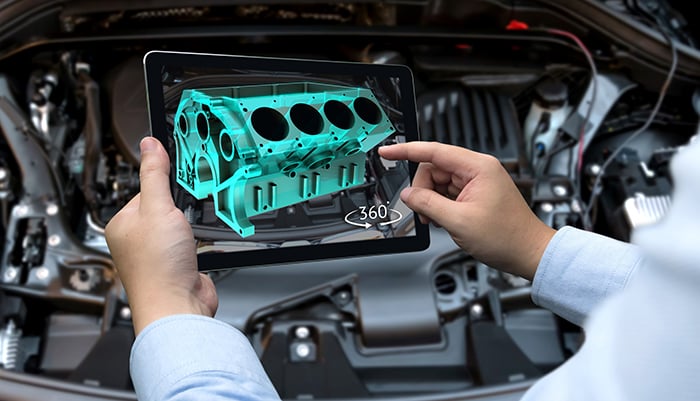
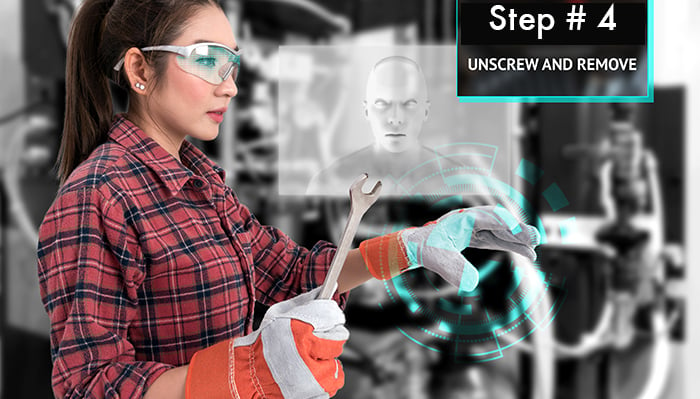
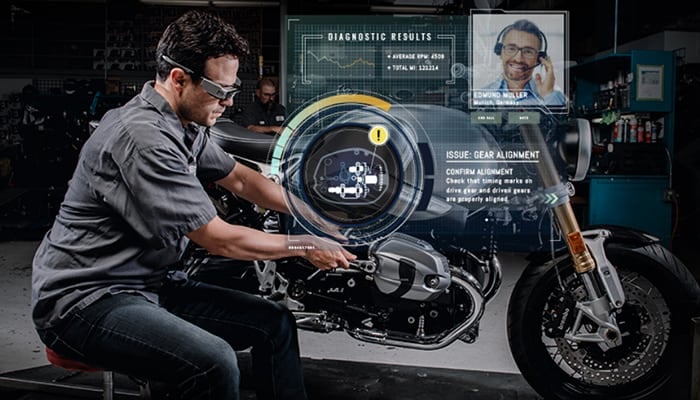
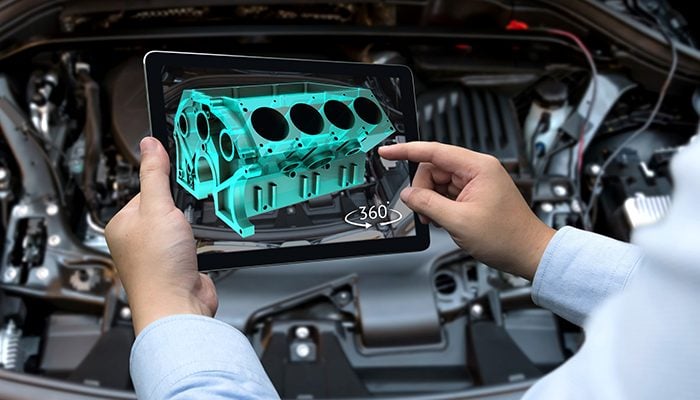
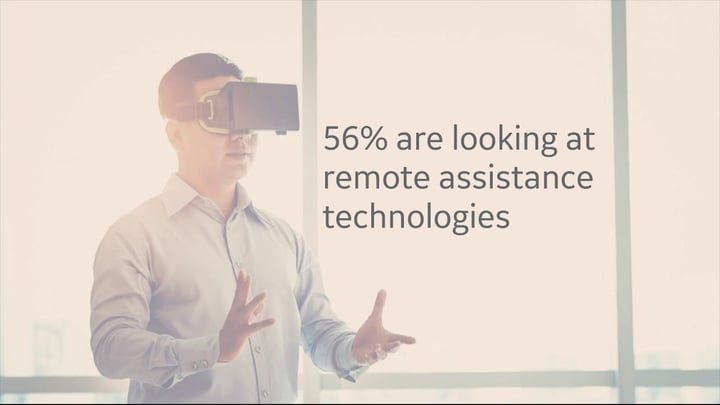









 Field Service News is published by 1927 Media Ltd, an independent publisher whose sole focus is on the field service sector. As such our entire resources are focused on helping drive the field service sector forwards and aiming to best serve our industry through honest, incisive and innovative media coverage of the global field service sector.
Field Service News is published by 1927 Media Ltd, an independent publisher whose sole focus is on the field service sector. As such our entire resources are focused on helping drive the field service sector forwards and aiming to best serve our industry through honest, incisive and innovative media coverage of the global field service sector.
Leave a Reply